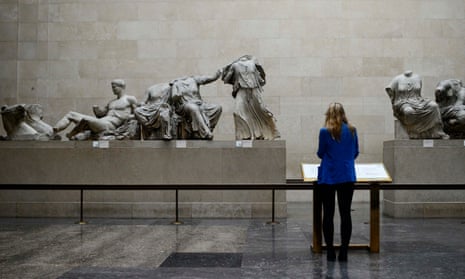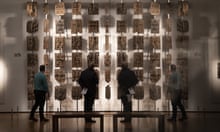“Past events exist, after all, only in memory, which is a form of imagination,” wrote Ursula K Le Guin. “The event is real now, but once it’s then, its continuing reality is entirely up to us, dependent on our energy and honesty.”
In the past few days I’ve been written about in the Times and splashed across the pages of the Daily Mail. An MP has called my work “sensationalist”. Apparently, applying modern understanding to the past is unscholarly, childish and disrespectful. When I started leading my Uncomfortable Art Tours around London museums last summer, the goal was to give an alternative view of imperialism, and look at the ways the British empire is represented by Tate Britain, the Victoria and Albert Museum, the National Gallery and others. I am not affiliated to the institutions I guide in, so I’m free to interrogate their histories in a way that staff often can’t. We look at art commissioned by those on both sides of the abolitionist movement, unpack the subtle agendas in portraits, and examine the role of museums in creating hierarchies of “civilised” and “savage”.

Most importantly, we talk. Being physically in a gallery, a space that privileges some experiences over others, and critiquing this, is a form of dissent. It’s a way of opening up the debate about whose stories deserve to be told – and whose faces seen – when we talk about Britishness and nationhood. Museums are institutions of memory – they must stop pretending there’s only one version of events, and be willing to own up to their role in shaping the way we see the past.
There is no such thing as neutrality or objectivity. Every label in a gallery was written by a person. Every object was placed, every room was designed. Those people are reflecting their backgrounds in the choices they make, consciously or not.
I make “Display It Like You Stole It” badges for people to wear on the tours. It’s a slogan designed to push museums and visitors to rethink the politics of presentation in galleries. On most text panels there’s little or no mention of how objects came to be there. Euphemistic language of “acquisition” obscures the truth. I don’t believe most visitors to the British Museum’s Benin and South Pacific collections, for example, or the V&A’s Indian collections, come away understanding that these are largely the spoils of war.
Short of actually repatriating these objects – which I believe museums should do – they must at least be open about their histories. You can look at the Gweagal shield in the British Museum and have no idea that it is considered crucial to the story of Indigenous and settler relations in Australia, that its position in the museum is extremely controversial, and it’s sought by Gweagal people today. The display and potential long-term loan to Ethiopia of the Maqdala treasures by the V&A hints at an overdue shift towards self-awareness, and a willingness to sit with the enduring shame and pain of empire. But it’s just a hint.
My tours, and projects like them, will continue until museums engage fully with their imperial legacies without needing to be prompted. I don’t know when that will happen, but it must.



